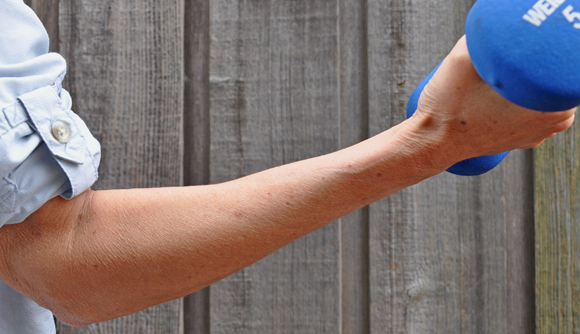March 20, 2023. I adapted this from a Way I wrote last year about the flu. It’s about building your immunity in general – by exercising. There’s no way to know today if it’s specifically relevant to the coronavirus variants. But we do know that exercise is a good thing for a lot of reasons. So it’s worth a shot. If you’d like to pass this on, please do – it’s accessible to everyone; no subscription necessary. Stay healthy.
Exercise is probably your best bet for improving your immunity and reducing your sick time throughout the Fall-Winter cold and flu season – and the rest of the year.
The British Journal of Sports Medicine published the results of a U.S. study. The title: “Upper respiratory tract infection is reduced in physically fit and active adults“. Yup, people who exercise at least five times a week have half as many colds as people who don’t. And when they catch a cold, it’s milder and shorter.
The exercisers had 46% fewer colds than the sedentary (zero or once-a-week exercise). And when the active ones did get a cold or flu, they had 41% fewer days with symptoms. This is a big deal because most adults get 2 – 4 colds per year. Kids get 8 – 10. So how does this work?
Revving up your heart rate during aerobic exercise also revs up your immune response. There’s a significant increase in the number of immune system cells circulating in your body during exercise, and for a few hours after. So regular exercise means a regular increase in the surveillance and combating of those alien bacterial and viral cells that cause colds. The longer you go between aerobic exercise sessions, the longer the aliens have to infect you.
You always knew regular exercise prevents or reduces obesity, diabetes and heart and other diseases. Now you can add colds and the flu to your treadmill’s hit list.
Better Cheaper Exercise
Do something every day – or almost every day – that revs you up for 30 minutes or more. Run. Walk briskly. Dance fast.
The cold season’s occasional lousy weather doesn’t prevent me from chugging along indoors on my treadmill. I run and incline-walk on one with a “reflex deck”; it’s a laminated, arched deck that flexes to absorb some of the impact of every step – so the old knees, ankles and hips don’t have to take it all. The latest version goes up to a 15-degree incline. I use it four days a week. While watching the wonderful trail videos on my Treadmill Trails App for Apple and Android devices. Don’t Just Run In Place. Run In Great Places.
The other three days? I start with my feel-good stretching exercises and move on to simple strengthening exercises. At a good, steady pace that gets my heart rate up, keeps it up and makes me sweat. And I do my balance exercises. Do them long enough and you’ll definitely start to sweat. Eat, drink, sweat and be healthy.
And get some sleep
According to this study, you’re 4 times more likely to catch a cold if you catch less than 5 or 6 hours of sleep per night.
The Tastiest Vitamin C
At this time of year, one serving of Aromatic Roasted Red Cabbage delivers 200% of your Vitamin C daily requirement. Ditto for a serving of Moroccan Orange & Olive Salad. Crunchy Fall Farro Salad gives you a day’s worth. So does a bowlful of Spiced Cauliflower Soup. And a serving of Root Vegetable Rösti.
Every Thing Is Everything
Your immune system relies on Vitamin C. “[Vitamin C] plays important roles in immune function and the modulation of host resistance to infectious agents, reducing the risk, severity, and duration of infectious diseases … Supplementation of Vitamin C was found to improve components of the human immune system … in populations in which insufficient intake of these nutrients is prevalent. In the developing world, this is the case in low- and middle-income countries, but also in subpopulations in industrialized countries, e.g. in the elderly..” National Institutes of Health
It’s Always Something
If you ‘re not in a Vitamin C-deficient population, “Evidence of Vitamin C for the prevention and treatment of the common cold has been mixed. A 2007 analysis of results from 30 clinical trials involving 11,350 participants found that taking Vitamin C regularly (at least 0.2 grams per day) did not reduce the likelihood of getting a cold, but was associated with slight reduction in the duration and severity of cold symptoms. Among participants in six trials who were exposed to extreme physical or cold stress (e.g., soldiers in subarctic conditions) and took vitamin C, a 50-percent reduction in the risk of getting a cold was seen.” National Institutes of Health
The Better Cheaper conclusion: Maintain your Vitamin C supply year-round with a healthy diet that includes Vitamin C-rich fruits and vegetables – not bottles of supplements.

